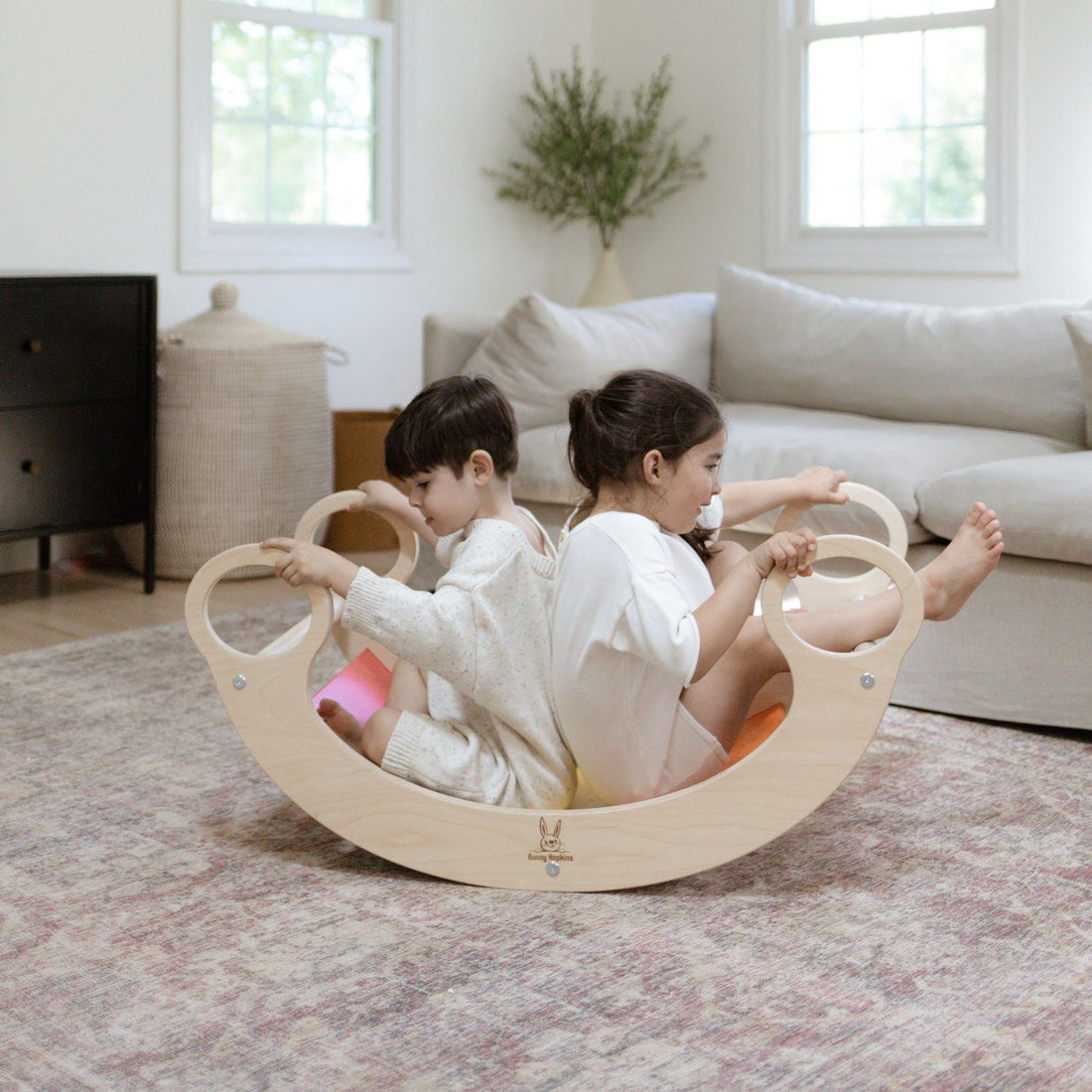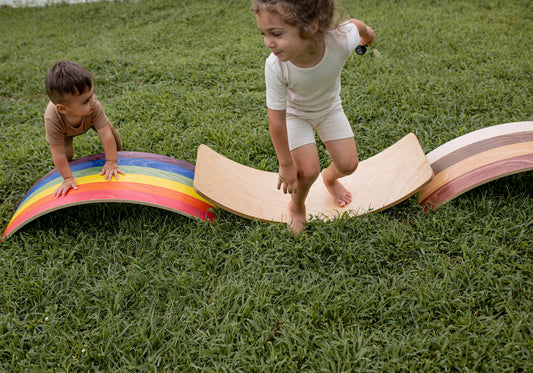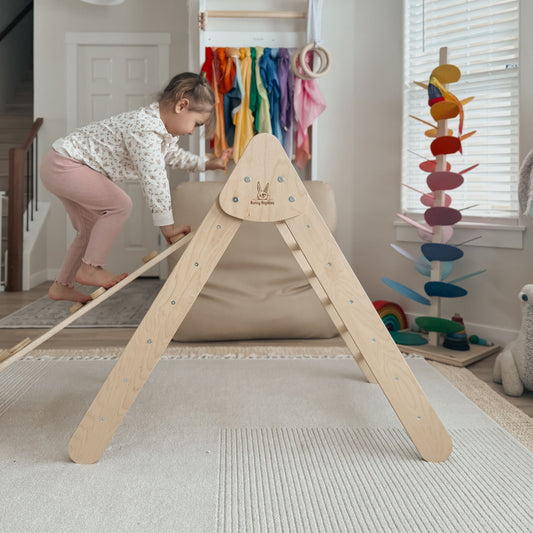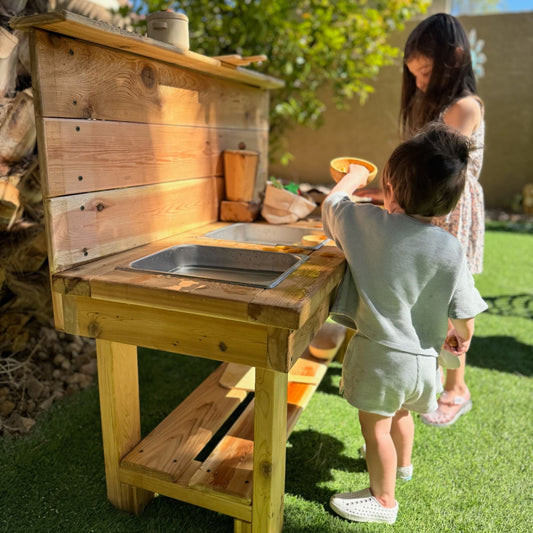
How I Discovered Waldorf and Why It Changed How I Parent
Shamik DasguptaShare
When my daughter was around two, I started noticing something interesting. Despite having access to a wide range of modern toys; some with lights, sounds, even tiny touchscreens, she kept gravitating toward the simplest objects. Wooden blocks. Play silks. A stacker that could become a bridge, a mountain, or a crown, depending on the day.
It was in those quiet moments of play that I realized: children don’t need to be entertained. They need space - space to imagine, to create, to explore.
That discovery led me on a journey. I wanted to understand why my daughter thrived when her play was open-ended and unstructured. Why simple toys sparked more joy than anything else. Why less was, somehow, more.
That’s when I came across Waldorf education. And honestly, it changed everything.
Discovering Waldorf as a Father
Waldorf wasn’t something I grew up with, and I didn’t find it through a parenting course or a podcast. I stumbled into it by following my daughter’s lead. Watching how she learned through movement, repetition, and imitation. Not through direct instruction, but through play.
The more I learned about Waldorf, the more it resonated, not just as an educational philosophy, but as a worldview that centers the child as a whole person. It honored the natural rhythm of childhood, the importance of creativity, and the deep value of hands-on learning. It also aligned perfectly with what we’re doing at Bunny Hopkins - supporting open-ended play and nurturing curiosity from the very start.
What Is Waldorf Child Development Pedagogy?
Waldorf education (also called Steiner education) is grounded in the idea that children grow through distinct developmental phases, each with its own needs and strengths. The goal isn’t to accelerate learning, but to meet the child exactly where they are and support them fully in becoming who they’re meant to be.
It’s a whole-child approach: nurturing the head (thinking), heart (feeling), and hands (doing). It’s not just about what children know - it’s about how they feel, how they move, how they relate to the world, and how they create meaning.
The Three Stages of Child Development in Waldorf Pedagogy
Waldorf education breaks down child development into three main stages. As a parent, understanding these stages gave me clarity and permission to slow down.
1. Birth to 7 Years — Learning Through Imitation and Play
- In these early years, children learn primarily through imitation and sensory experiences.
- There's no rush into academics. Instead, daily life becomes the classroom—rhythm, routine, song, stories, and unstructured play are the curriculum.
- This stage is where open-ended play is not just encouraged—it’s essential for developing imagination, problem-solving, and emotional resilience.
2. 7 to 14 Years — Learning Through Feeling and Imagination
- Children in this phase connect to the world through emotion and story.
- The curriculum becomes rich with myths, legends, art, music, and hands-on experiences that stir curiosity and empathy.
- Teachers often stay with a class for multiple years, creating strong relationships and continuity.
3. 14 to 21 Years — Learning Through Thinking and Individuality
- Adolescents begin to seek truth, meaning, and independence.
- They are ready for abstract thinking, philosophical debate, and deeper exploration of ethics, science, and society.
- The goal is not just to prepare them for tests, but to help them become conscious, compassionate individuals who know how to think for themselves.
What Waldorf Education Supports
What I love most about Waldorf is what it doesn’t force—and what it quietly, confidently supports.
- A slower pace that respects developmental readiness
- Deep, sustained imaginative play
- A strong emotional foundation through storytelling and relationships
- Artistic expression as a pathway to understanding the world
- Learning through movement and doing, not just watching
- Limiting screens in the early years to preserve creativity
- Trusting children to unfold in their own time
- As a father, these values felt deeply aligned with the kind of childhood I want for my daughter - one that’s rooted, joyful, and wonder-filled.
Why Waldorf Feels So Relevant Today
We live in a time where artificial intelligence is reshaping how we work, think, and learn. Kids are growing up in a world of endless content, fast answers, and constant stimulation.
But AI can’t replicate imagination. It can’t replace human creativity, intuition, or empathy. And those are exactly the qualities that Waldorf education develops.
In a world of automation, what will set our children apart isn’t how early they learned to read or code. It’s how deeply they know themselves. How well they can adapt. How fully they can imagine new possibilities and build meaningful relationships.
Waldorf education fosters that kind of human intelligence—the kind that will always matter, no matter how much technology advances.
What This Means for Bunny Hopkins
At Bunny Hopkins, we believe in play that empowers. That doesn’t dictate outcomes. That encourages exploration and invention. And that’s exactly what Waldorf honors.
Waldorf reminded me why open-ended play matters so much - and why tools that spark imagination, rather than replace it, are worth creating and sharing.
If you’ve ever watched your child turn a wobble board into a slide, a boat, a bridge, or a throne - you’ve already seen Waldorf in action. You’ve seen what happens when a child is trusted to lead their own learning.
And if you’re anything like me, that moment stays with you.
Final Thoughts
Discovering Waldorf wasn’t part of a parenting plan. It was part of paying attention—to my daughter, to what truly lit her up, and to the kind of world I hope she’ll help shape one day.
Waldorf didn’t give me answers. It gave me better questions—and a deep sense of trust in childhood itself.
That’s a gift I’ll carry with me for a long time.



